S&P Global Offerings
Featured Topics
Featured Products
Events
S&P Global Offerings
Featured Topics
Featured Products
Events
S&P Global Offerings
Featured Topics
Featured Products
Events
Featured Products
Ratings & Benchmarks
By Topic
Market Insights
About S&P Global
Corporate Responsibility
Culture & Engagement
Investor Relations
Featured Products
Ratings & Benchmarks
By Topic
Market Insights
About S&P Global
Corporate Responsibility
Culture & Engagement
Investor Relations
S&P Global Offerings
Featured Topics
Featured Products
Events
Language
S&P Dow Jones Indices — 13 Apr, 2021
By Jason Ye
This article is reprinted from the Indexology blog of S&P Dow Jones Indices.
In our previous blog (part II(opens in a new tab)), we introduced SPACs’ lifecycles, as well as the potential benefits and risks of investing in SPACs. In this blog, we will focus on SPACs’ liquidity. In general SPACs’ liquidity is poor when seeking the target, surges on the deal announcement date, and remains low relative to the S&P SmallCap 600®(opens in a new tab) after de-SPAC.
As of March 26, 2021, the median market capitalization of all listed SPACs was USD 284 million, much lower than the median market capitalization of USD 1.5 billion of S&P SmallCap 600 constituents. Since most SPACs are small- or micro-cap companies, we compared their liquidity against the S&P SmallCap 600. Based on the lifecycle of a SPAC, we analyzed its liquidity in three stages: post-IPO, deal announcement, and post-deal completion (see Exhibit 1).

We analyzed the 767 SPAC IPOs listed on the NYSE, NASDAQ, and NYSE American since 2008. As discussed in part I of our blog series(opens in a new tab), the majority of SPAC IPOs occurred in 2020 and 2021. We tracked the history of each SPAC through its lifecycle. Of the 767 SPAC IPOs, 27 were liquidated, while 23 SPACs finished the merger but were further acquired by another company, privatized, or became bankrupt. We excluded these 50 SPACs from our analysis in order to focus on the de-SPAC companies before any further corporate actions. Only common stock is included in our analysis.
Exhibit 2 shows that the average number of months from IPO to deal announcement was 10.8 months, and the average number of months between deal announcement and deal completion was 4.6 months. 57% of SPACs announced a target within 12 months, and 98% of SPACs completed the merger within 12 months. For our analysis we use 1, 3, and 6 months for post-IPO, and 3, 6, and 12 months for post-completion.
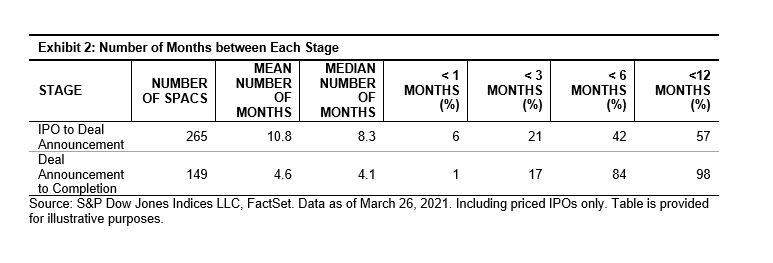
Exhibit 3 shows that the median of the S&P SmallCap 600 constituents’ past three-month median daily value traded (MDVT) was around USD 7 million at each quarter-end during the past five years, and the mean was around USD 11 million.
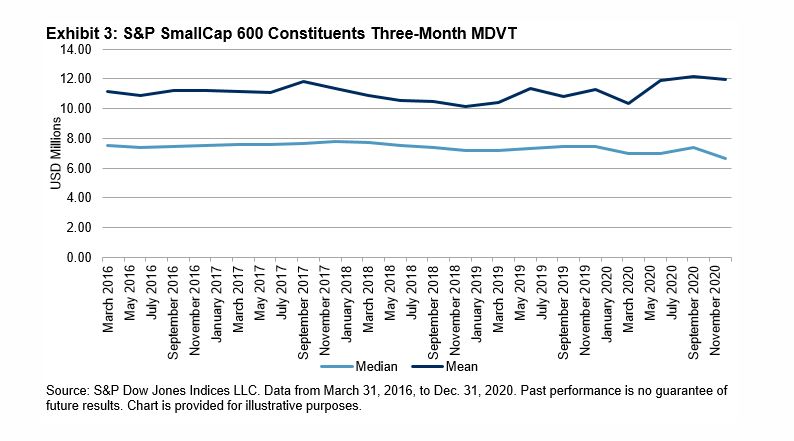
Exhibit 4 summarizes the SPACs’ MDVT and how that compares to the USD 7 million and USD 11 million benchmark liquidity post-IPO and post-completion, respectively. Exhibit 5 shows how the daily value traded changed 30 days before and 30 days after deal announcement, and Exhibit 6 highlights the distribution of value traded on the announcement day. The data shows the following:
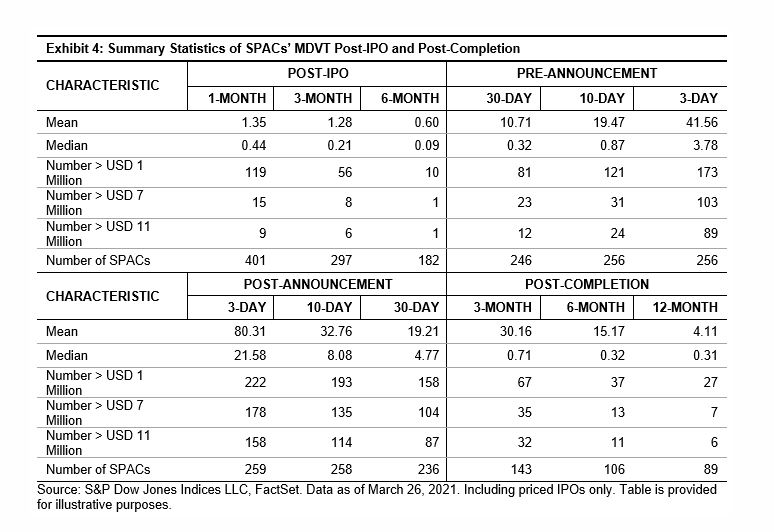
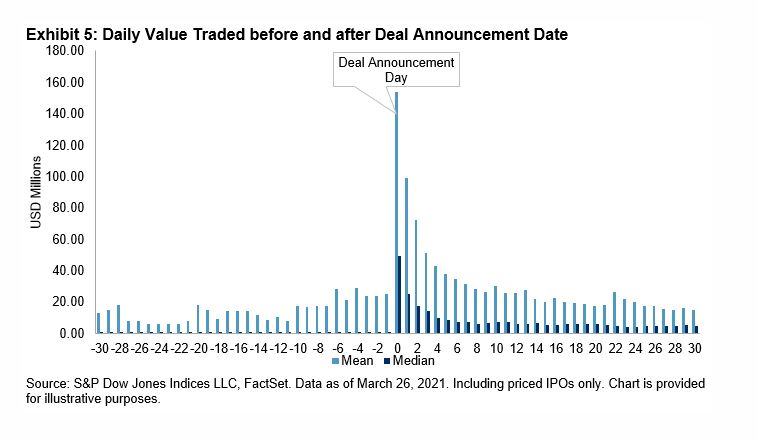
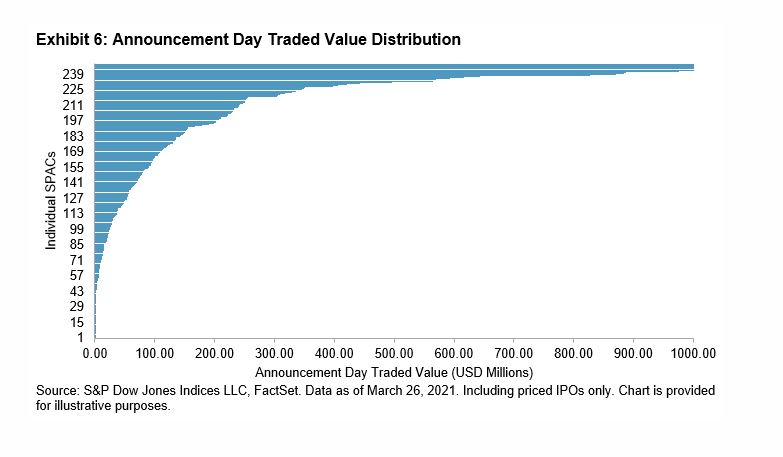
In our next blog in this series, we will follow the same framework to analyze SPACs’ performance.
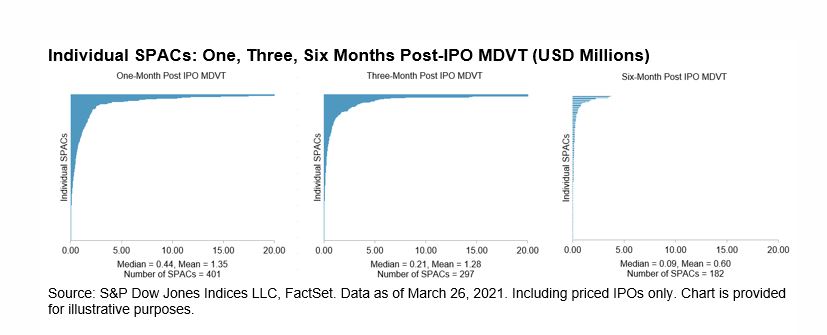
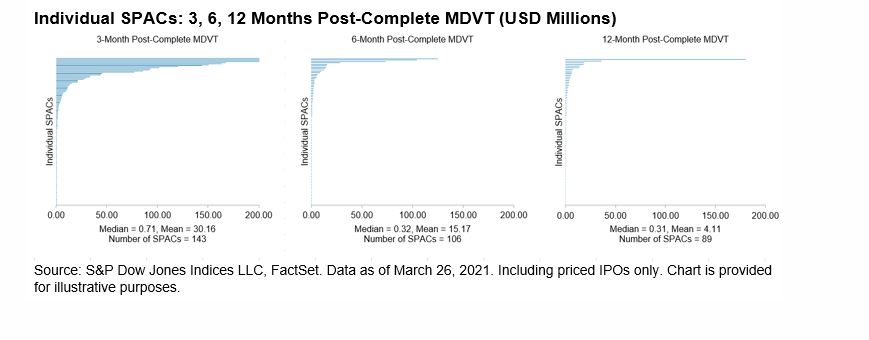 The posts on this blog are opinions, not advice. Please read our Disclaimers.
The posts on this blog are opinions, not advice. Please read our Disclaimers.
Content Type
Location
Segment
Language
